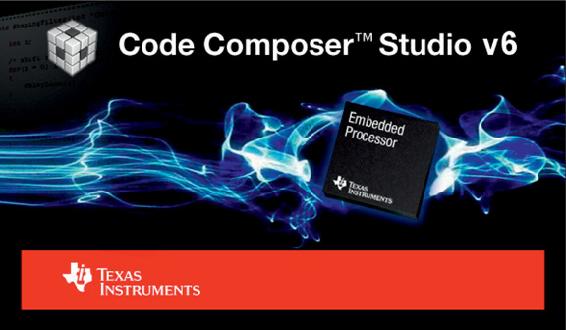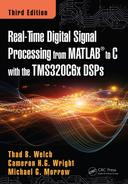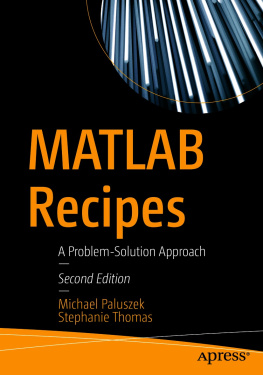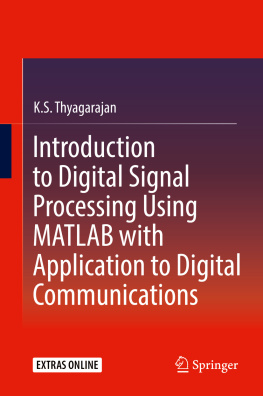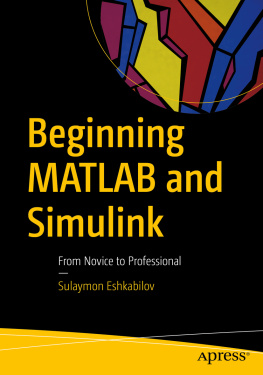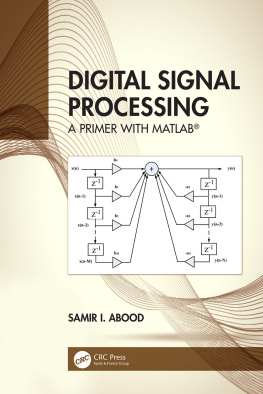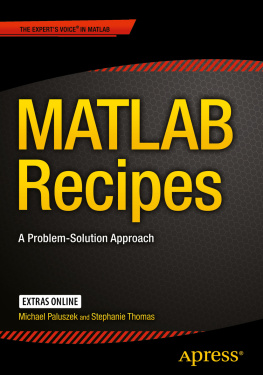Eeep, we couldnt find that page. Search, or go to the .
Find answers on the fly, or master something new. Subscribe today.
Back to top
2019 window.NREUM||(NREUM={});NREUM.info={"transactionName":"YgdaZ0NSW0cEB0RdWltNfkZfUEFdCgofXFBHDVYdR1pQQxZeRl1QQj1aWkU=","agent":"","beacon":"bam.nr-data.net","errorBeacon":"bam.nr-data.net","applicationTime":62,"queueTime":5,"applicationID":"3275661,67267027,67267028","licenseKey":"510f1a6865"}
T HIS book would not have been possible without the support and assistance of Texas Instruments (TI), Inc. In particular, the authors would like to extend a sincere thank you to Cathy Wicks, whose tireless efforts in directing TIs worldwide University Program has helped make DSP affordable for countless students and professors. Cathys predecessors Christina Peterson, Maria Ho, and Torrence Robinson also contributed to our efforts that eventually resulted in this book. TIs support of DSP education is unsurpassed in the industry, and the authors greatly appreciate such a forward-looking corporate vision.
We would also like to thank Nora Konopka and Kyra Lindholm of CRC Press (part of the Taylor & Francis Group), who helped guide this third edition to completion. Their ready help, quick responses, and never-failing sense of humor should be the model to which other publishers aspire. Note that we provided the manuscript to the publisher fully formatted in camera-ready form, so any typos are the fault of the authors, not the publisher.
The authors would like to acknowledge Robert W. Conant for his valuable contributions to the chapter on QPSK digital receivers, and Brian L. Evans for his helpful suggestions regarding coverage of PN sequences in the text. Robert F. Kubichek, at the University of Wyoming, also provided many excellent suggestions and feedback.
This book was certainly improved because of the input of both anonymous reviewers and the experiences of the many users of the first and second editions, who gave us valuable feedback and many excellent suggestions.
We would be remiss if, in these brief acknowledgments, we omitted a plug related to the mechanics of writing the text: this book was typeset using LATEX, a wonderfully capable document preparation system developed by Leslie Lamport as a special collection of macros for Donald Knuths TEX program (specifically, we used the pdfLATEX variant of pdfTEX created by Han The Thanh to directly produce output as a PDF file). LATEX is ideally suited to technical writing, and is well supported by the worldwide members of the TEX Users Group (TUG); investigate http://www.tug.org/ for details. TEX, LATEX, and pdfLATEX are freely available in the public domain (the name TEX is a trademark of the American Mathematical Society). We used the excellent TeXstudio freeware editor (see http://texstudio.sourceforge.net/ ) as a front-end to the comprehensive TeX Live distribution of LATEX freely provided by the TEX Users Group. For maintaining the database of bibliographic references in the standard BIBTEX syntax, we used the freely available and highly capable JabRef program (see http://jabref.sourceforge.net/ ). All these programs are not only free, but also available for a variety of operating systems. Figures in this book were created mainly with one of two programs: Canvas and MATLAB. Canvas is a high-end technical drawing package by ACD Systems of America, Inc.; it can create and manipulate both vector and bit-mapped graphics in the same figure, providing a capability similar to both Adobe Illustrator and Adobe Photoshop combined all in one package. MAT-LAB, by The MathWorks, Inc., is an incredibly powerful numerical computing environment and a fourth-generation programming language, with many Toolbox extensions available for various specialized fields.
C ODE Composer Studio (CCS) is Texas Instruments (TI) integrated development environment (IDE) for developing application programs on a wide variety of their DSPs. In CCS, the editing, code generation, and debugging tools are all integrated into one unified environment. You can select the target DSP, adjust the optimization parameters, and set the user preferences as you desire.
An application program is developed based on the concept of a project, where the information in the project file determines what source code files are used and how they will be processed. Learning to use Code Composer Studio is a necessary step in bridging the gap between DSP theory and real-time DSP if you plan to use TI processors. We recommend that you devote some time to getting to know CCS.
In the first edition of this book, we included in , the tutorial for Code Composer Studio (CCS). These expanded tutorials are based on versions we have given as part of our Real-Time DSP Workshops at various IEEE and ASEE conferences, and have been field tested by many people.
Note: We highly recommend you visit the book website to read the latest information regarding CCS, since even small changes can cause you great frustration. For example, C6713 DSK users now need to specify a different compiler version to be used with CCS than those users with OMAP-L138 boards, due to a subtle change in output file format.
This book assumes that you have CCS properly installed on a computer running a relatively recent version of the Windows operating system. As stated in , this book also assumes your version of CCS is version 6.1 or later. If your version is earlier than 6.1, you can usually obtain an updated version via download from TI. If CCS is not yet installed, please install it now before continuing. This short overview and the tutorial on the book website are much more effective if you can follow along on your computer.
How do you know if CCS is installed? Before moving on to the tutorial on the website, find on your computer either an icon or an entry on the start menu for CCS and use that to start the program.. There may be a progress bar at the bottom of the splash screen to indicate how far the program initialization has proceeded. This initialization can take several seconds depending on your system.
When the initialization is complete, the splash screen should disappear and the main project window should appear in its place. This main project window should look similar to , the C source code is shown in the largest pane, and so forth. If you have gotten this far, you are ready to turn to the tutorial on the books website.
After completing the CCS tutorial from the books website, you will be much more confident using this powerful development tool, and will probably avoid some of the problems and frustrations that can come with unfamiliarity with CCS. We also hope that, in the context of your new familiarity with CCS, the format of all our CCS projects included with this book will make sense to you.
